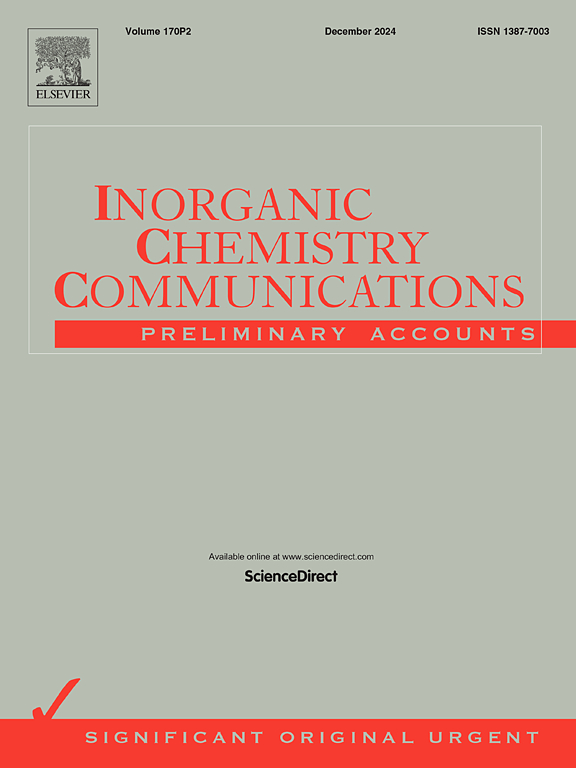镧系铝酸盐包封氧化铝静电纺纳米纤维膜增强文件安全认证
IF 4.4
3区 化学
Q1 CHEMISTRY, INORGANIC & NUCLEAR
引用次数: 0
摘要
光响应油墨已成为一种流行的认证方法,以提高认证效率。然而,最近的研究表明,光反应油墨有几个关键的缺点,包括高成本和低耐用性。本文中,镧系铝酸盐纳米粒子(NLA;2 ~ 6 nm的纳米纤维包被在电纺丝氧化铝(ALU)纳米纤维中。采用溶胶-凝胶法制备了聚乙烯吡咯烷酮/无水氯化铝(PVP/AlCl3)的纺丝溶液。采用静电纺丝和煅烧技术制备了直径为100 ~ 155 nm的氧化铝纳米纤维。在认证承载材料中封装无机光致变色剂可以保证耐久性和光稳定性。结果表明,nla包封氧化铝(NLA@ALU)纳米纤维具有较高的可逆性和光稳定性。应用不同含量的NLA,可制得发射特性不同的NLA@ALU纳米纤维。NLA@ALU纳米纤维在白光下显示透明,在紫外光下显示绿色。使用各种分析工具来检查光致变色膜的形态。研究了纳米纤维膜涂布纸的拉伸性能。在365 nm处监测激发强度,表示透明外观,而在517 nm处监测发射强度,表示绿色。所开发的氧化铝纳米纤维膜可以作为一种有效的策略来对付伪造和伪造有价值的文件。本文章由计算机程序翻译,如有差异,请以英文原文为准。
Enhancing security authentication of documents using lanthanide aluminate-encapsulated alumina electrospun nanofibrous membrane
Photoresponsive inks have been a popular authentication method to enhance the authentication efficiency. However, recent studies have revealed that photoresponsive inks have several critical drawbacks, including high cost and low durability. Herein, nanoparticles of lanthanide aluminate (NLA; 2–6 nm) were encapsulated in electrospun alumina (ALU) nanofibers. Spinning solutions of polyvinylpyrrolidone/anhydrous aluminum chloride (PVP/AlCl3) were prepared by the sol–gel technique. The electrospinning and calcination technology were applied to produce alumina nanofibers with diameters of 100–155 nm. Durability and photostability can be guaranteed by encapsulating inorganic photochromic agents in authentication hosting materials. As a result, the NLA-encapsulated alumina (NLA@ALU) nanofibers displayed high reversibility and photostability. When several contents of NLA were applied, different NLA@ALU nanofibers with distinctive emission characteristics were produced. The NLA@ALU nanofibers displayed transparency in the white light and a green emission in the ultraviolet light. Various analytical tools were used to examine the morphology of the photochromic films. The tensile properties of the nanofibrous membrane-coated papers were investigated. The excitation intensity was monitored at 365 nm to indicate a transparent appearance, whereas the emission intensity was monitored at 517 nm to designate a greenish color. The developed alumina nanofibrous membranes can be characterized as an effective tactic against the forgery and counterfeiting of valuable documents.
求助全文
通过发布文献求助,成功后即可免费获取论文全文。
去求助
来源期刊

Inorganic Chemistry Communications
化学-无机化学与核化学
CiteScore
5.50
自引率
7.90%
发文量
1013
审稿时长
53 days
期刊介绍:
Launched in January 1998, Inorganic Chemistry Communications is an international journal dedicated to the rapid publication of short communications in the major areas of inorganic, organometallic and supramolecular chemistry. Topics include synthetic and reaction chemistry, kinetics and mechanisms of reactions, bioinorganic chemistry, photochemistry and the use of metal and organometallic compounds in stoichiometric and catalytic synthesis or organic compounds.
 求助内容:
求助内容: 应助结果提醒方式:
应助结果提醒方式:


